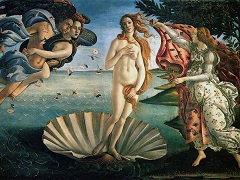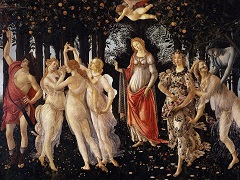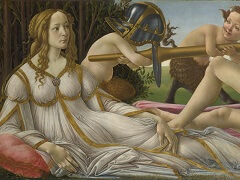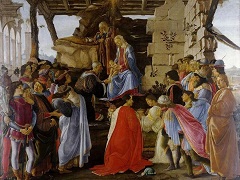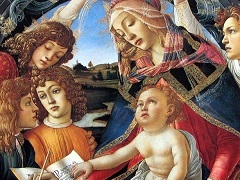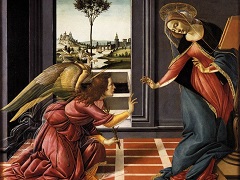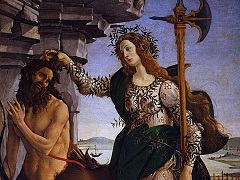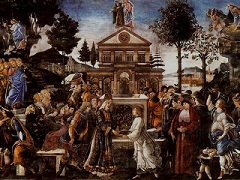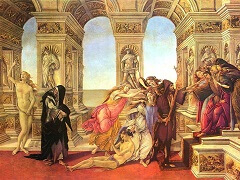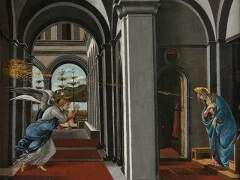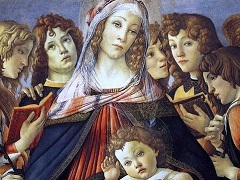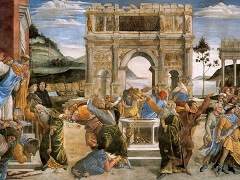Adoration of the Magi, 1475 by Sandro Botticelli

Somewhere around 1475, Botticelli painted the famous Adoration of the Magi for Guasparre del Lama, a work in which the artist also depicted himself. This painting established Botticelli's fame in Florence, and may rightfully be considered the high point of his early artistic output. Guasparre del Lama was a parvenu from the humblest background with a dubious past - he had been convicted of the embezzlement of public funds in 1447. He had been working since the 1450s as a broker and money-changer, something which brought him considerable wealth. In order that he might also obtain the high social standing which he lacked, he enrolled in the most prestigious brotherhoods and endowed a chapel in Santa Maria Novella, which he decorated with Botticelli's altar-piece. Del Lama's career did not last long, for he soon slipped back into his dishonest business practices. In January, 1476, he was convicted of fraud by the judges of the Guild of Money-Changers, leading to his being banned from conducting any further professional activity in this area, together with the loss of his so laboriously established standing in society. He returned to his earlier life of mediocrity, to die in humble circumstances.
All that remained of del Lama's brief social advancement was Botticelli's Adoration of the Magi, intended for his chapel in Santa Maria Novella. Contemporary accounts record that the painting had a costly marble frame and was located on an altar erected against the inner wall of the church's facade and surrounded by a wrought-iron balustrade.
Del Lama's Christian name, Guasparre (Caspar), determined the subject-matter of the picture, since the first of the Magi was his patron saint. Del Lama was thus following a practice which had come down from mediaeval times, namely the commissioning of altar paintings depicting one's patron saint as a means of assuring oneself of the saint's special intercession on one's behalf at the Last Judgement. Del Lama may be seen among the crowd of people on the right-hand side of the picture, an elderly man with white hair and a light blue robe looking at the observer and pointing in the latter's direction with his right hand. The most famous members of the Medici family are portrayed together with del Lama; controversy rages as to their precise identification, although there is no doubt that the eldest king, kneeling before the Virgin and the Christ Child, is a representation of Cosimo the Elder, founder in the 1430s of what would be dynastic rule by the Medici family over Florence for many years to come. The question naturally arises as to what Guasparre del Lama hoped to achieve by depicting the Medici family in his altar painting. It would appear that the parvenu wished to express in this manner his attachment to the powerful Medici, who were also enrolled in the Arte di Cambio - the Guild of Money-Changers - and upon whose goodwill he was dependent for the successful outcome of his business.

